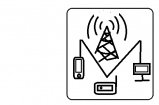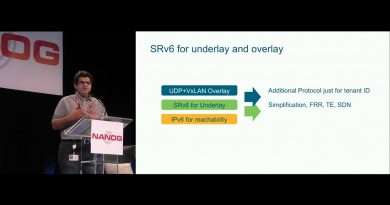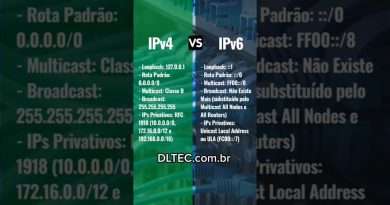Our Experiences Deploying Kubernetes with IPv6
Kubernetes is a portable, extensible, open-source platform for managing containerized workloads and services, that facilitates both declarative configuration and automation. It has a large, rapidly growing ecosystem. Kubernetes services, support, and tools are widely available.
The name Kubernetes originates from Greek, meaning helmsman or pilot. Google open-sourced the Kubernetes project in 2014. Kubernetes builds upon a decade and a half of experience that Google has with running production workloads at scale, combined with best-of-breed ideas and practices from the community.
Going back in time
Containers are becoming popular because they have many benefits. Some of the container benefits are listed below:
Agile application creation and deployment: increased ease and efficiency of container image creation compared to VM image use.
Continuous development, integration, and deployment: provides for reliable and frequent container image build and deployment with quick and easy rollbacks (due to image immutability).
Dev and Ops separation of concerns: create application container images at build/release time rather than deployment time, thereby decoupling applications from infrastructure.
Observability not only surfaces OS-level information and metrics, but also application health and other signals.
Environmental consistency across development, testing, and production: Runs the same on a laptop as it does in the cloud.
Cloud and OS distribution portability: Runs on Ubuntu, RHEL, CoreOS, on-prem, Google Kubernetes Engine, and anywhere else.
Application-centric management: Raises the level of abstraction from running an OS on virtual hardware to running an application on an OS using logical resources.
Loosely coupled, distributed, elastic, liberated micro-services: applications are broken into smaller, independent pieces and can be deployed and managed dynamically – not a monolithic stack running on one big single-purpose machine.
Resource isolation: predictable application performance.
Resource utilization: high efficiency and density.
Why you need Kubernetes and what can it do
Containers are a good way to bundle and run your applications. In a production environment, you need to manage the containers that run the applications and ensure that there is no downtime. For example, if a container goes down, another container needs to start. Wouldn’t it be easier if this behavior was handled by a system?
That’s how Kubernetes comes to the rescue! Kubernetes provides you with a framework to run distributed systems resiliently. It takes care of your scaling requirements, failover, deployment patterns, and more. For example, Kubernetes can easily manage a canary deployment for your system.
Kubernetes provides you with:
Service discovery and load balancing
Kubernetes can expose a container using the DNS name or using their own IP address. If traffic to a container is high, Kubernetes is able to load balance and distribute the network traffic so that the deployment is stable.
Storage orchestration
Kubernetes allows you to automatically mount a storage system of your choice, such as local storages, public cloud providers, and more.
Automated rollouts and rollbacks
You can describe the desired state for your deployed containers using Kubernetes, and it can change the actual state to the desired state at a controlled rate. For example, you can automate Kubernetes to create new containers for your deployment, remove existing containers and adopt all their resources to the new container.
Our Experiences Deploying Kubernetes with IPv6 – André Martins, Covalent IO IPv6 will turn 20 years old in 2018, IPv4 addresses are nearly extinct, it is time to give IPv6 a real chance. This talk will cover the process of deploying Kubernetes with IPv6 step by step. We will discuss the current state of IPv6 in Kubernetes and all related components and list what is left to be done. We will walk through the deployment step by step in a easy to follow demo where questions can be asked. This talk will give a chance to learn more about Kubernetes networking and how IPv6 will enable to scale public addressing inside your Kubernetes cluster. About André Martins André Martins started his open source career through a Linux Foundation Internship 3 years ago where he focused on projects that ease the deployment of networking infrastructures by contributing to the OpenDaylight project. André then switched focused to containers and orchestration and started contributing to Kubernetes and Docker. He is also a co-creator of the Cilium Project which brings BPF to the container networking and security world to provide faster networking, better security, tracing and visibility for application developers and infrastructure operators.
Category
Science & Technology
License
Creative Commons Attribution license (reuse allowed)
Views : 1168
ipv6




